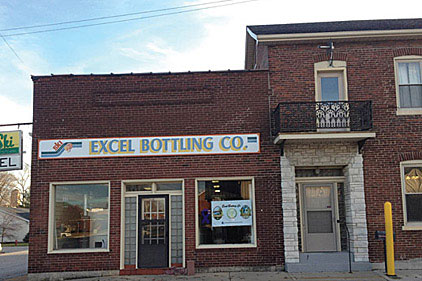 Saint Arnold Brewing Company co-founder Brock Wagner knew that his growing craft brewery’s move to a 104,000-sq-ft building in Houston’s Northside district would require a new steam boiler system. Saint Arnold’s original firetube boiler was struggling to produce enough steam to meet the company’s increasing heating and sterilization needs, so finding a new and dependable steam-generation source was essential.
Saint Arnold Brewing Company co-founder Brock Wagner knew that his growing craft brewery’s move to a 104,000-sq-ft building in Houston’s Northside district would require a new steam boiler system. Saint Arnold’s original firetube boiler was struggling to produce enough steam to meet the company’s increasing heating and sterilization needs, so finding a new and dependable steam-generation source was essential.
Wagner asked other craft brewers what they used and he spoke to two major local hospitals. All told him about their Miura ultra-low NOx modular on-demand steam solutions. Based on their positive feedback, Wagner purchased Miura LX-200 and LX-50 steam boilers from Houston-based Burner Combustion Systems. He now reports a fuel savings of 50% on every barrel of beer Saint Arnold brews, in addition to reliable on-demand steam generation and other benefits.
“We brewed 40,000 barrels last year and expect to break the 50,000 barrel mark this year,” Wagner notes. “Saint Arnold brews six year-round and five seasonal beers, which are distributed in Texas and Louisiana. Even though our new 127-barrel brew house is four times larger, our new Miura LX-200 is able to handle many more duties at much higher efficiency and less cost. Our natural gas bills are greatly reduced, although I don’t have specific numbers on that yet. Basically, today we’re brewing twice as much beer for the same amount of natural gas that our old boiler required two years ago.”
Miura boilers employ a unique “once-through” fintube design that heats a smaller volume of water more efficiently than other boilers. This, combined with built-in precision microprocessor-control technology, conserves fuel and saves an average of 20% annually on energy costs over other boiler designs for typical installations.
Miura’s fintube design also enables its boilers to generate full steam from a cold start in five minutes or less. This modular on-demand steam capability makes Miura boilers particularly well-suited to a multiple installation (MI) in which boilers can be selectively turned on or off as needed to efficiently manage changing load conditions, as opposed to idling in stand-by and consuming energy.
“We use a batch process, so there are long periods when our steam requirements dip,” Wagner explains. “With Miura, it takes no time at all for the boilers to turn on, fire up, and be at pressure. And they’re only firing when we actually need them. We save the LX-50 for when we’re doing smaller operations, and for standby. Our old system had to be turned on far ahead of when it was needed because it took so long to build up pressure. And then once we started pulling on it, it often struggled to keep up.”
Miura boiler design also provides a more compact footprint than that of many traditional options. This was, Wagner explains, yet another factor in his decision to choose the brand.
“Our boiler room would have to have been extended another six feet out,” he said. “We would have had to either reduce our fermentation area or make the entire building larger, which would have been a big decision.”
The extra space gained by installing Miura boilers — and their modular design — also provides Saint Arnold with the option of adding additional Miura boilers in the future, should the company choose to add craft distilling to its business plan.
GREEN ECONOMICS
Another major benefit of the energy-conserving fintube design and precision control of Miura boilers, as compared to conventional models, is their reduced output levels of NOx, a major contributor to air pollution, as well as CO2, the most prevalent of greenhouse gases. Miura boilers achieve low-NOx performance by reducing the temperature of the boiler’s flame, which in turn reduces the amount of excited nitrogen atoms available to bond with oxygen to form nitrogen oxides.
As a result of this, NOx emissions are reduced to around one-quarter of what traditional firetube boilers emit. This enables Miura boilers to comply with even the most stringent air-quality regulations. With regard to reduced CO2 emissions, Miura’s technology leverages superior operating efficiency to contribute significant carbon abatement with a payback.
“This is certainly very important to us because the city of Houston has low-NOx requirements,” Wagner said. “Our clean-burning Miura boilers had no problem in meeting those requirements. Other than standard preventive maintenance, since they were installed two years ago we’ve had absolutely zero maintenance or operational issues with our Miura boilers.”
Microprocessor control of Miura boilers is performed by their built-in BL Micro Controller, which keeps track of multiple individual monitoring points. A “sliding-window feature” records events four seconds before they occur for fast and effective troubleshooting. This system can also be accessed via the Internet using the Miura Online Maintenance (“MOM”) feature for remote monitoring and diagnostics.
The system can also interface with Miura’s Colormetry feature, which monitors water quality to prevent the build-up of scale inside the boiler. Another option is Miura’s Economizer package, an energy-saving component that works as a heat exchanger to capture and re-use heat from the boilers’ hot stack gas. Users can also opt for Miura’s BOILERMATE® water-treatment chemicals, the main ingredient of which is silicate, an environmentally friendly corrosion inhibitor. Saint Arnold maintains the purity of the water fed to its Miura boilers with a reverse-osmosis system.
“We are constantly seeking ways to reduce our carbon footprint and be more efficient,” Wagner says. “A big benefit of the microprocessor control of our Miura boilers is that they are constantly optimizing how they run, which reduces the amount of natural gas they burn and, in turn, saves us money. To me, being green is always good, but really what drives people to want to be green and conserve is the economic impact of it. I think that’s the best — and the most sustainable — situation when conservation and economic forces work together.”





